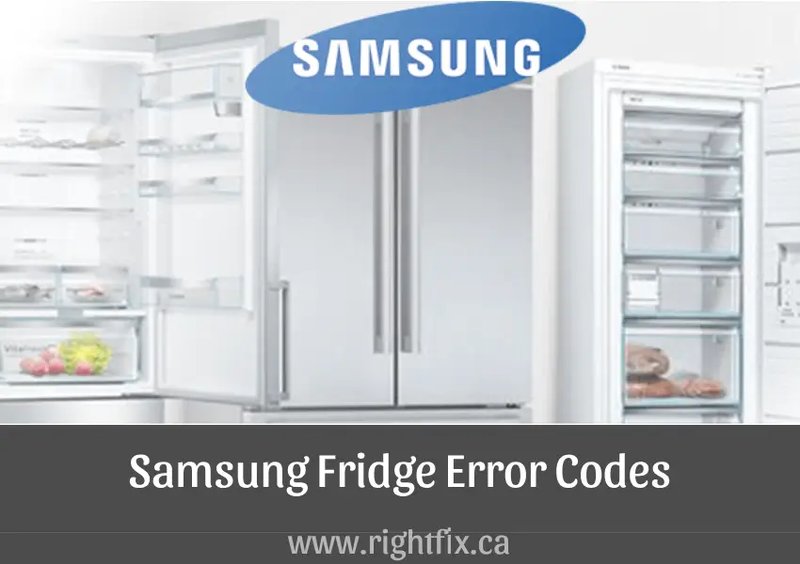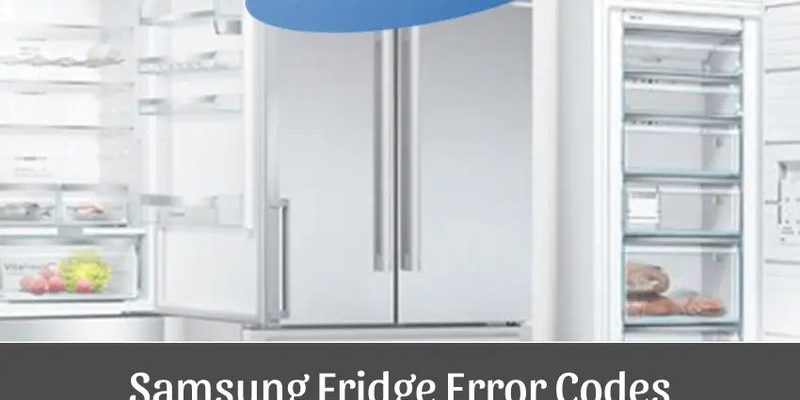
Think of your refrigerator like a team of superheroes; each part has a job to do. When one part isn’t working properly, it calls out for help—kind of like a superhero sending up a distress signal. The E1 error code is your fridge’s way of saying, “Hey, something’s not quite right in the defrost system or the temperature sensor. Can we fix this?” Let’s dive into what could be causing this issue and how you can tackle it like a pro, with little to no experience.
Understanding the E1 Error Code
Before we get into the nitty-gritty of fixing the error, let’s understand what this code actually means. The E1 error code typically indicates a problem with the refrigerator’s defrost sensor. Your Samsung fridge, much like any modern appliance, is equipped with sensors that help maintain the right temperature. When these sensors malfunction or fail to communicate with the main control board, you get the E1 error code.
Imagine your refrigerator as a bustling city. The sensors are the city planners, making sure traffic (i.e., cold air) flows smoothly and nothing overheats or freezes up. If those planners stop communicating, traffic snarls, and confusion reigns. That’s when you get the E1 alert. This is important because a malfunctioning defrost sensor means the fridge might not maintain the correct temperature effectively, potentially affecting the freshness of your food.
Now, how does this happen? A few common causes could trigger the E1 error. These can range from a simple power outage disrupting the system’s routine to a more complex hardware issue within the sensor itself. Sometimes, the problem could also arise if the doors were left open for too long, disrupting the temperature balance. The key is identifying the root cause to prevent future inconvenience.
Checking the Defrost Sensor
First things first: let’s talk about the defrost sensor. In the simplest terms, this sensor acts like the thermostat in your house. It gauges the temperature inside the fridge and freezer compartments, ensuring everything stays chilled just right. When it’s faulty, your fridge can start acting out, leading to that nagging E1 error code.
If we think about this like a car, the defrost sensor is the equivalent of your dashboard warning lights. It alerts you to an issue long before you can feel it. So, when the defrost sensor is on the fritz, it might be misreading the temperature, making your fridge think it’s warmer or cooler than it actually is. This discrepancy is what triggers the E1 code.
Now, what do you do about it? A great first step is to give your fridge a good old-fashioned reboot. Just like restarting your computer when it’s being glitchy, turning your refrigerator off for a few minutes and then back on can sometimes reset the system, clearing the error code. If this doesn’t work, it might be time to roll up your sleeves and inspect the sensor itself. Checking its connections to ensure there are no loose or damaged wires can also help.
Investigating Electrical Issues
Electrical issues can sometimes be the culprit behind the mysterious E1 error code. Imagine your refrigerator as a well-oiled machine, with electricity being the oil that keeps everything running smoothly. A disruption in power supply or a glitch in the electrical components can throw a spanner in the works.
One common issue is a tripped circuit breaker or a blown fuse. Much like how a sudden power surge can knock out your home’s Wi-Fi, a similar electrical hiccup can cause your fridge to lose its cool—literally. If you suspect an electrical issue, check your circuit breaker and ensure everything is in order. Sometimes, simply resetting the breaker can solve the problem.
Another handy tip is to examine the refrigerator’s power cord and plug. Look for any visible signs of wear and tear or damage. If the cord appears frayed or the plug is bent, this could be disrupting the electrical flow and causing the E1 error. Replacing the damaged parts can not only solve the current issue but prevent future electrical problems as well.
Preventing Future E1 Errors
Let’s talk prevention, because after all, nobody wants to play detective with their refrigerator every morning. Keeping your Samsung fridge in tip-top shape can help avoid future E1 errors. It’s a bit like regular car maintenance; a little care goes a long way.
First, ensure that your fridge’s location is optimal. It should be placed away from heat sources like ovens or direct sunlight. Why? Because external heat can confuse the temperature sensors, leading to more frequent errors. It’s like wearing a sweater in summer and wondering why you’re sweating!
Regularly defrost your fridge if it’s not a frost-free model. Ice buildup can affect the sensors and lead to errors. Imagine trying to listen to someone speak through a thick wall of ice. Not ideal, right? Similarly, your fridge sensors can’t work efficiently if they’re encased in ice.
Finally, consider getting your fridge serviced regularly by a professional. It’s one of those “an ounce of prevention is worth a pound of cure” situations. A professional can identify potential issues before they become big problems, saving you from the headache of dealing with error codes and failed appliances in the future.
In a nutshell, the E1 error code may seem like a big deal, but armed with a bit of knowledge and some straightforward troubleshooting steps, you can address it effectively. By understanding the causes and taking preventative measures, you can ensure your Samsung refrigerator remains a reliable companion in keeping your food fresh and your ice cream perfectly chilled.
